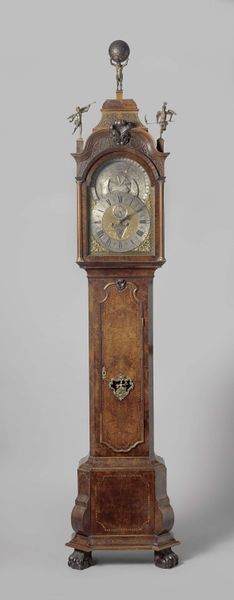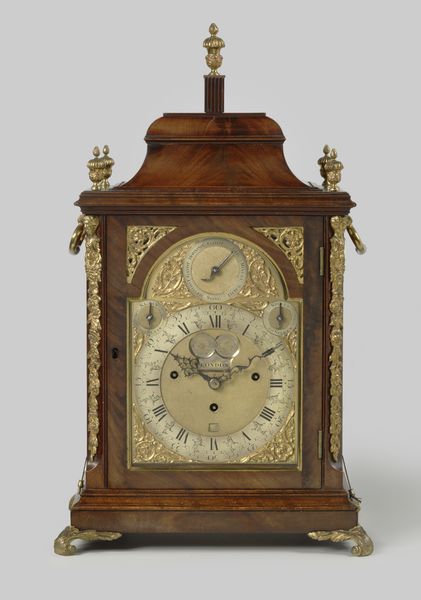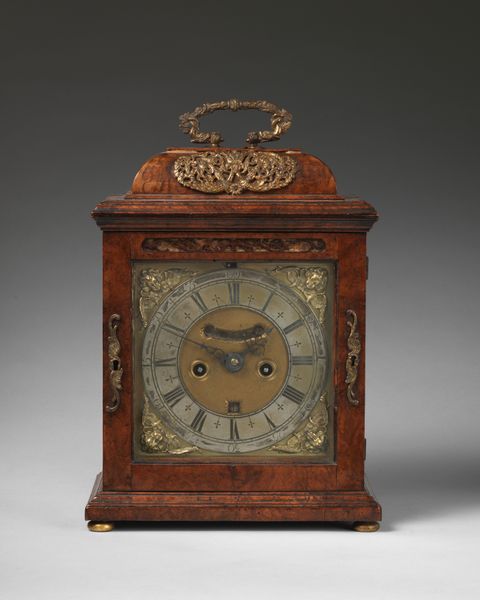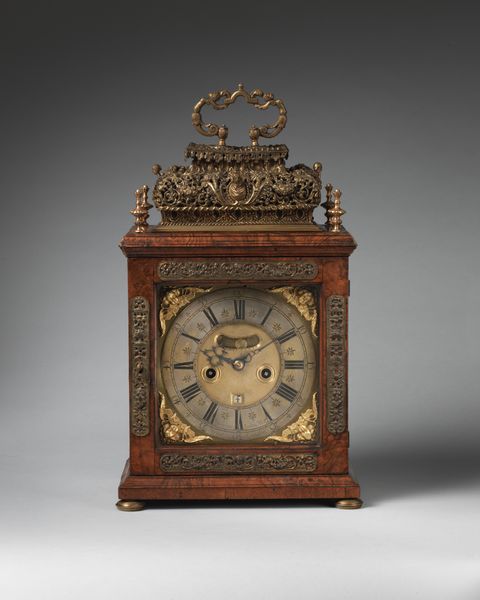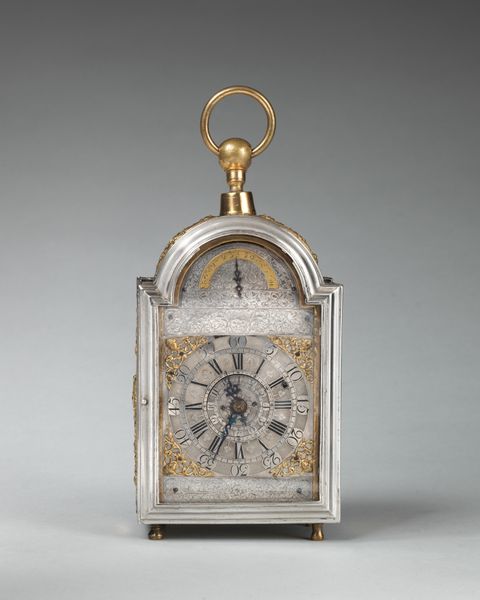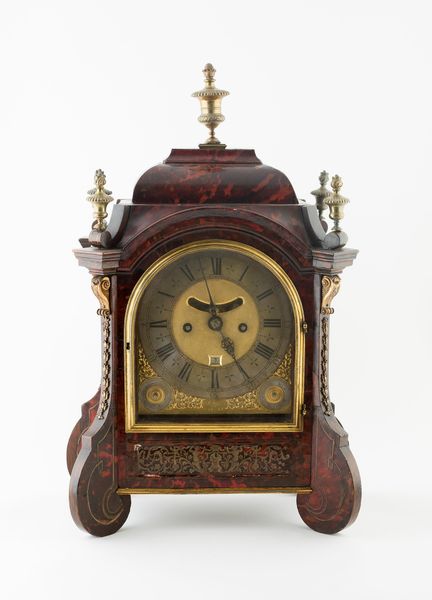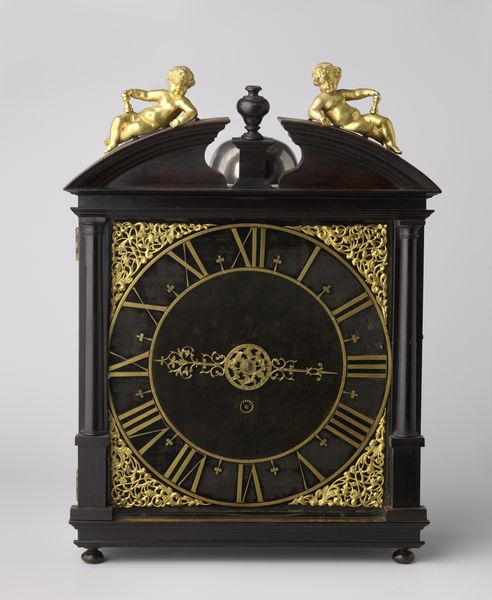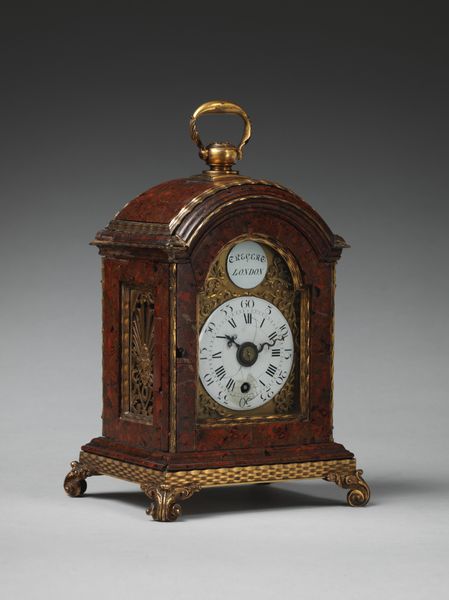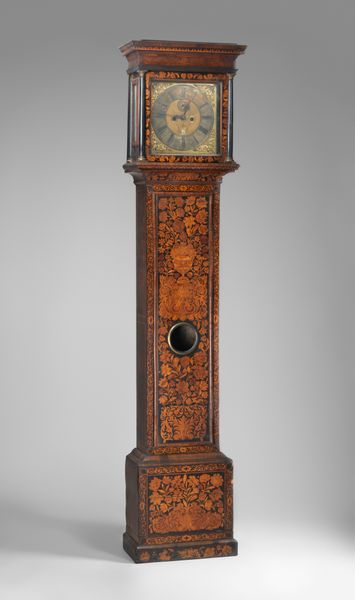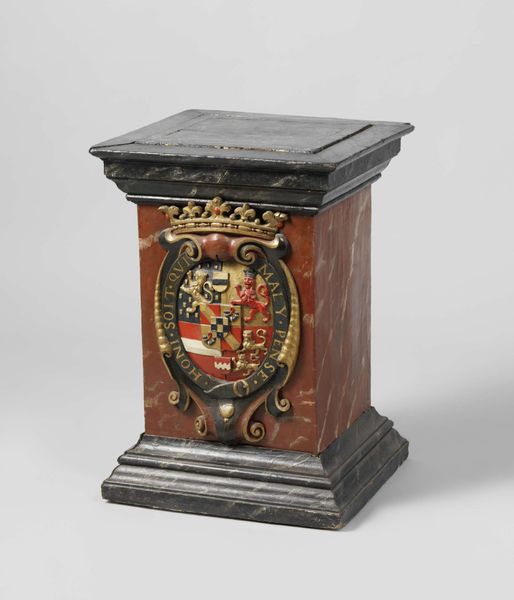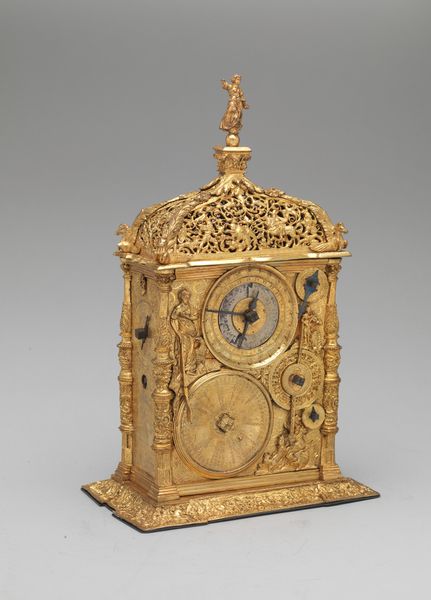
#
ornate
#
pottery
#
sculpture
#
wood background
#
unrealistic statue
#
stoneware
#
ceramic
#
watercolour bleed
#
earthenware
#
watercolor
Dimensions: height 30.1 cm, width 14.1 cm, depth 9.3 cm, weight 3338 gr
Copyright: Rijks Museum: Open Domain
Nicolaas Weylandt made this table clock, probably in the Netherlands, sometime before his death in 1756, using wood, metal and tortoiseshell. Timepieces like this were a product of the early modern scientific revolution, which spurred new interest in measuring time. This clock would have been a luxury item, one that signaled the owner’s wealth and education. The tortoiseshell veneer was an expensive material, and the elaborate silver face shows great skill on the part of the craftsman. It speaks to the rise of a wealthy merchant class in the Netherlands, eager to display their status through consumer goods. To understand more about clocks like this, we can look to trade records, guild regulations, and household inventories. These sources can tell us about the social networks and economic conditions that made such objects possible. By studying the material culture of the past, we gain insight into the lives and values of those who came before us.
Comments
rijksmuseum about 2 years ago
⋮
This lavishly executed case testifies to the great value that collectors and art lovers attached to ingeniously made clocks. The silver musical instruments on the sides of the clockcase - a lute, a violin, trumpets - allude to the various melodies the movement can play. Nicolaas Weylandt was one of Amsterdams best-known clockmakers.
Join the conversation
Join millions of artists and users on Artera today and experience the ultimate creative platform.

